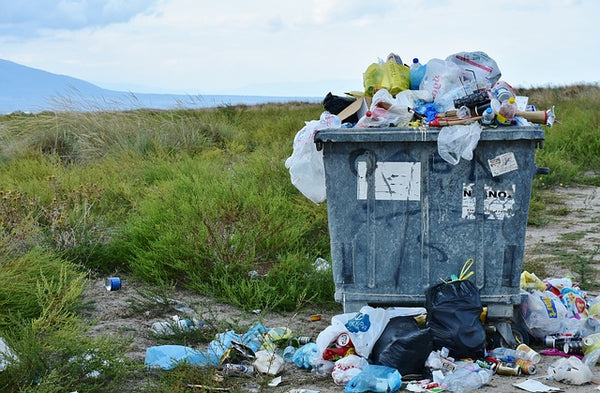Is compostable better than recyclable?
Feb 01, 2023
What is Compostable Packaging? What are the Advantages?
Compostable packaging is made from materials that can break down in a compost and turn into biomass, ultimately creating nutrient rich fertiliser for gardens. Not all compostable packaging is made the same - there are industrially compostable products and home compostable products. Industrially compostable packaging requires a third party industrial facility to compost the products. Most consumers and businesses don’t have easy access to these facilities. Home compostable products mean that they can be placed in a home compost bin along with household food waste and other dry materials such as leaves and twigs for it to break down. An advantage of this type of packaging is that it is worm friendly and non-toxic to organisms in a home compost bin. Another advantage of compostable mailers (Link to Shop All Mailers Page) is that they are made with partly renewable ingredients (usually 30-40%) which means less energy consumption.
The effect of compostable packaging on the environment
Compostable packaging is not the perfect solution to the climate crisis, but it is a great first step. From production to disposal, it has a much lower carbon footprint than single-use plastic. Home compostable products don’t require transport to a third party facility and therefore the carbon footprint stops as soon as the packaging has been placed in the home compost bin.
Items that are composted also reduce methane production from landfills, unlike single use plastics which must be thrown into the bin and ultimately land up in landfills.
However, not everyone has a home compost bin and therefore the packaging sometimes does end up in landfill. So, what then? What happens to compostable materials in landfill? They still break down but take a much longer time and in the process add methane to the atmosphere during that time. Methane is produced when there is no oxygen in densely packed landfills. Compostable materials usually take about 2 years to decompose in landfills and don’t turn into fertiliser as they haven’t been in ideal conditions.
What is recyclable packaging?
Recyclable packaging is anything that can be sent to a recycling facility to be remade into another product.
Recycling is the process of turning used materials that would otherwise go to waste into new products. By recycling, we can reduce the amount of garbage going to landfill or being burned, and it also decreases the need for extracting raw materials from nature. Recyclable items are typically identified by a small symbol composed of three arrow-shaped loops known as the three-arrow recycling symbol. Most commonly recycled materials include plastic containers, paper, metal cans and cartons, glass bottles and jars, aluminum foil, cardboard boxes and many other items.
Until recently, soft plastics were able to be recycled. However with the collapse of the largest soft plastics recycling facility, those products now go into the rubbish bin and into landfill. Therefore, soft plastics are no longer considered recyclable and should not be used for packaging purposes.
The effect recyclable products on the environment
Whilst recycling is an important part of reducing the carbon footprint, it does have a significant impact on the environment. Recyclable materials still require energy to be processed and reprocessed, leading to emissions of carbon dioxide, nitrous oxide and other greenhouse gasses. Additionally, some recyclable materials may end up in landfill if they are contaminated or unable to be recycled correctly.
Probably the most discreet extra carbon footprint of recycling is the transport between homes and facilities.
Most of the recycled material will probably just end up in the ocean because only 9% of plastics get recycled and definitely it takes more energy when making or say recycled to yet another single use item. Read The Truth about Recycled Plastic Mailers.
It is also important to note that in Australia, only 9% of products sent to recycling facilities actually get recycled. That means 91% go into landfill, adding to the waste problem.
Is Compostable better or Recyclable better?
In comparing compostable vs recyclable items, it really depends on the type of material and its intended use. Compostable products are typically made from organic materials that can be broken down by microbes over time -- making them a great option for reducing waste and returning essential nutrients back to the earth. However, industrially compostable items do require extra energy to compost. Home compostable is the better alternative. Recyclable items are processed in order to resell them as raw materials; however, there is still energy expended in doing so. Ultimately, your choice should depend on the item itself, and access to the best disposal method.
There are a number of businesses that are starting to sell plastic bags and packaging. They use words like “recyclable” and “recycled” and “oxo-biodegradable” thrown around to distract everyone from the fact that they are simple single use plastic. This packaging cannot be recycled. The production of these bags contribute to 1 million tonnes of plastic waste that goes into landfill and oceans every year. Plastic is one of the biggest factors in climate change and Hero Packaging has a goal to completely eradicate it from shipping processes worldwide.



